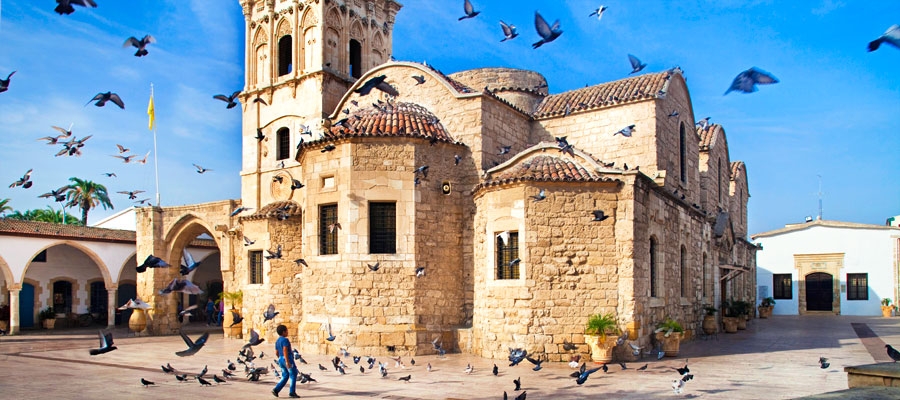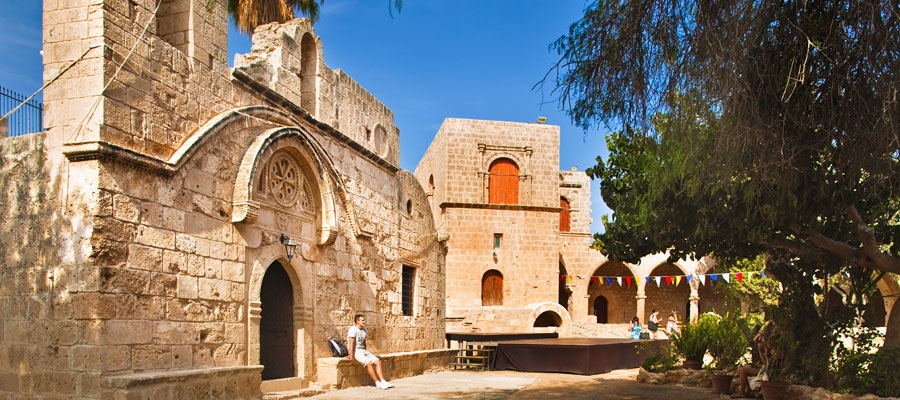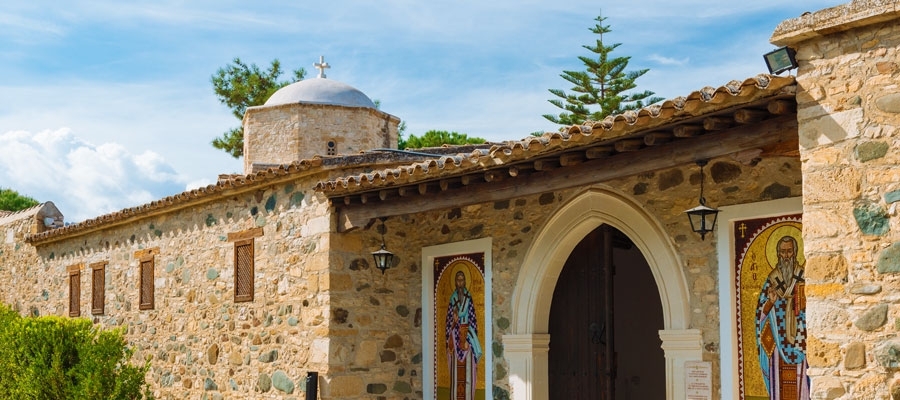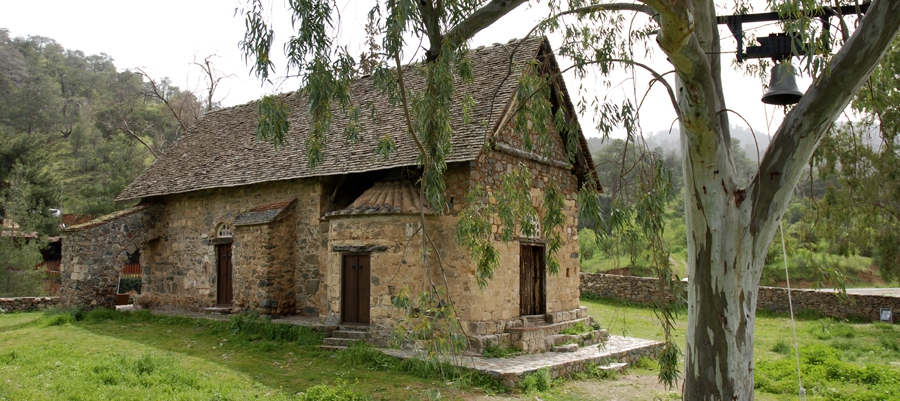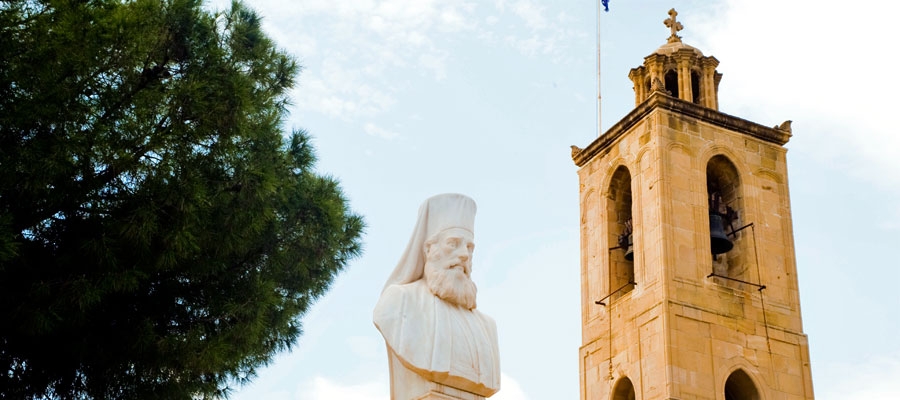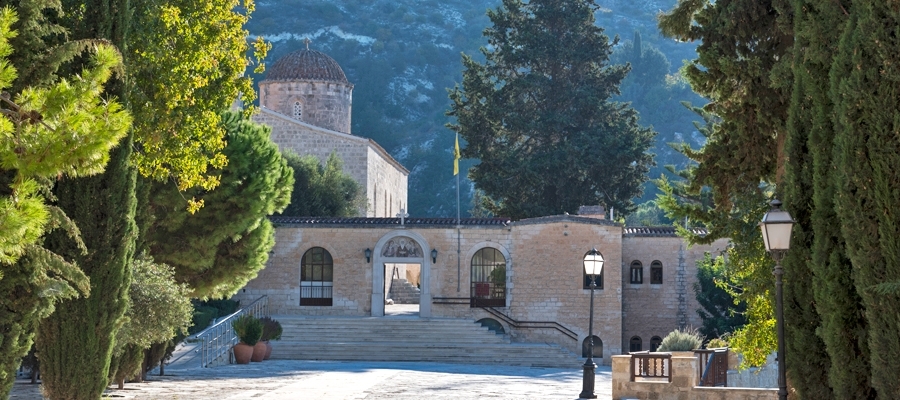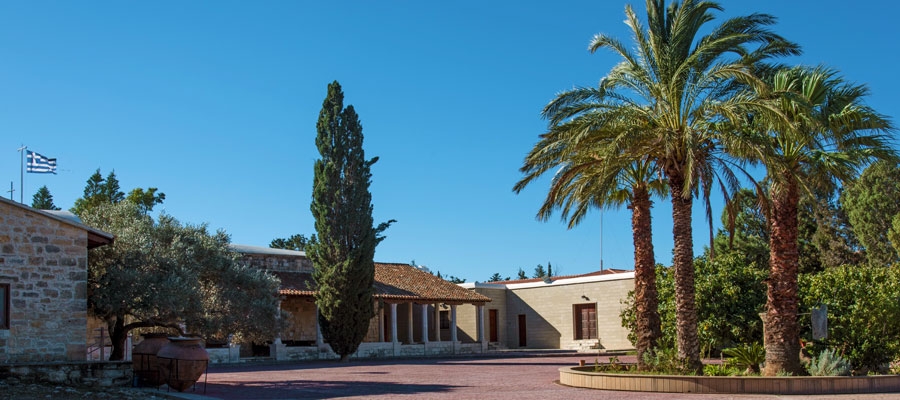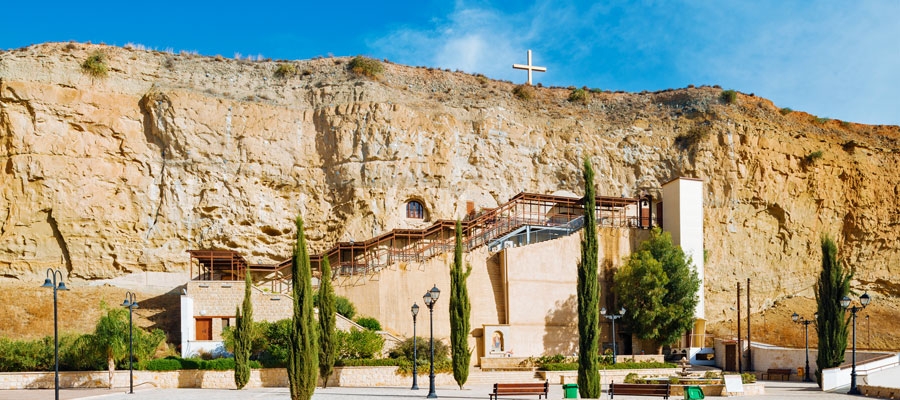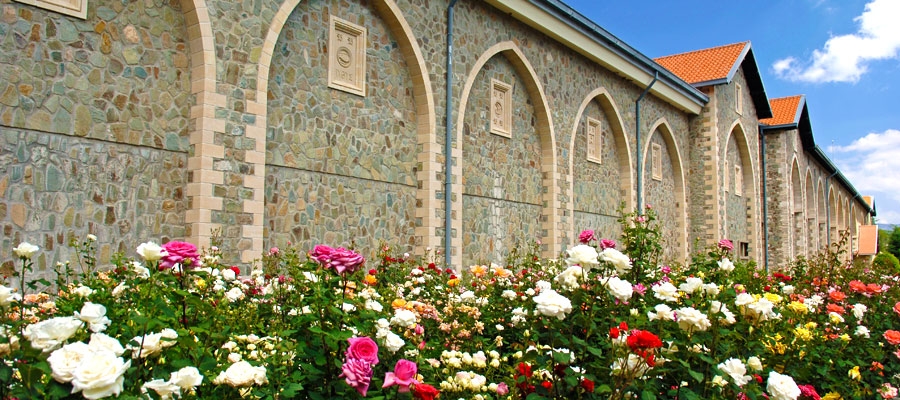In the local route of Larnaka (Larnaca), the first stop is at the church of Αgios Lazaros as well as the Εcclesiastical Museum located there, as they constitute two of the most significant monuments of Cyprus.
In Kiti, the church of Panagia tis Aggeloktistis can be found; a very significant Byzantine museum, which houses an arc of an old-Christian church with a mosaic of the 6th century within its interior.
Heading to Kato Lefkara, the route passes from the church of Archangelos Michael, with beautiful frescoes of the 12th and 15th centuries. The church of Τimios Stavros, in Pano Lefkara is located at a point that has a visual contact with the Monastery of Stavrovouni, and in its interior there is a silver cross in remembrance of the Bishop of Amathous. Although not known when it was built, it is certain that the Monastery of Agios Minas, in Vavla, was revived after 1965 when it became a women’s monastery.
In Hoirokitia lie the ruins of a monastery that once belonged to the Knights Templar, and later to the Knights Hospitaller, whilst the church of Panagia tou Kampou has some significant frescoes.
Pyrga is the last stop of this route and gives visitors the chance to see the Monastery of Stavrovouni – a men’s monastery with a strict ritual, the Μediaeval Chapel, and the church of Agia Marina.
Total route length: 73 km.

